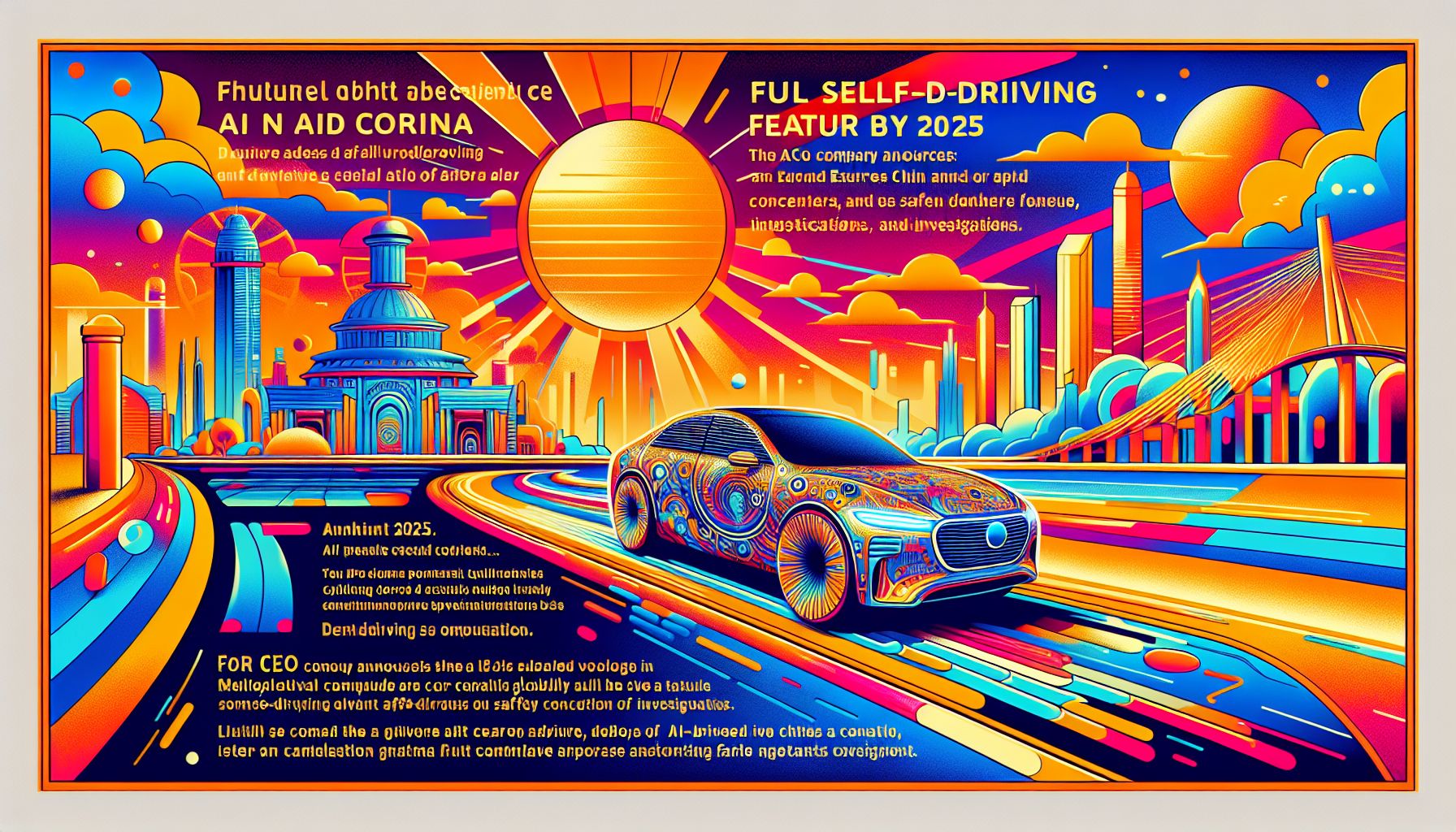Tesla's Full Self-Driving to Debut in Europe and China by 2025

Palo Alto, Friday, 6 September 2024.
Elon Musk announces Tesla’s plan to launch its Full Self-Driving feature in Europe and China in early 2025, pending regulatory approval. The move aims to expand Tesla’s AI-driven technology globally, despite ongoing safety concerns and investigations in the U.S.
How Full Self-Driving Works
Tesla’s Full Self-Driving (FSD) system is an advanced driver-assistance feature that leverages AI to perform tasks such as lane-keeping, adaptive cruise control, and automated parking. The system uses a combination of cameras, sensors, and machine learning algorithms to navigate roads. Despite its name, FSD is not fully autonomous; it requires the driver to remain attentive and ready to take control at any moment. The technology aims to enhance driving efficiency and safety, reducing the burden on human drivers while still requiring their oversight.
Benefits of Full Self-Driving
The introduction of FSD in Europe and China is expected to bring several benefits. Firstly, it could significantly reduce traffic accidents caused by human error, which accounts for approximately 94% of all traffic accidents globally[1]. Secondly, FSD can optimize traffic flow and reduce congestion by enabling more efficient driving behaviors. Moreover, the system’s advanced capabilities could lead to lower fuel consumption and reduced emissions, contributing to environmental sustainability. Finally, FSD could offer a more convenient and less stressful driving experience, particularly in urban environments with heavy traffic.
Challenges and Regulatory Hurdles
Despite its potential benefits, Tesla’s FSD has faced substantial scrutiny, especially in the United States. The system has been linked to numerous accidents, some of which have been fatal, prompting investigations by regulatory bodies like the National Highway Traffic Safety Administration (NHTSA)[2]. These incidents have raised concerns about the safety and reliability of the technology. In Europe and China, Tesla is still awaiting regulatory approval to launch FSD. Elon Musk has expressed confidence that the necessary approvals will be obtained by the end of 2024, clearing the way for a 2025 rollout[3].
Comparisons with Competitors
Tesla is not alone in the race towards fully autonomous vehicles. Companies like Waymo and Pony.ai have already launched commercial robotaxi services in various regions. Unlike Tesla’s FSD, which mandates human oversight, Waymo’s and Pony.ai’s systems are fully autonomous, capable of operating without any human intervention[4]. This has led to debates about whether Tesla’s approach is more or less effective in terms of safety and user experience. Despite the competition, Tesla’s strategy focuses on gradually improving its AI systems to achieve full autonomy eventually.
Future Prospects and Market Impact
Tesla’s plan to introduce FSD in Europe and China aligns with its broader strategy to become a leader in AI-driven automotive technology. The company’s stock has responded positively to the announcement, reflecting investor confidence in Tesla’s vision[5]. Tesla also plans to unveil its first self-driving taxi, potentially without steering wheels or pedals, in October 2024. If successful, these initiatives could position Tesla as a dominant player in the autonomous vehicle market, shaping the future of transportation.

